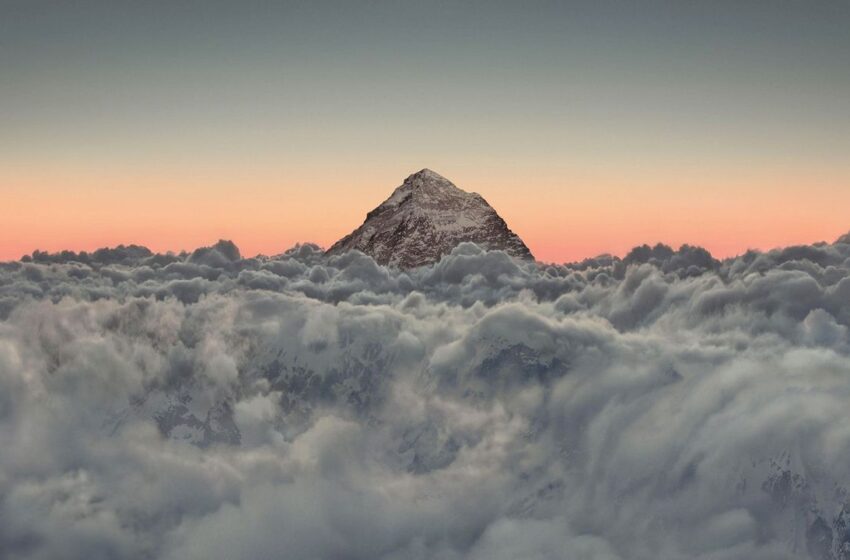
Himalayan Mountains Growing – But Tibet Could Be Splitting Apart
The massive Himalayan mountains are growing as the Indian and Eurasian tectonic plates collide. But this collision could be splitting Tibet apart.
A new study suggests that the Indian plate is tearing and warping in an unusual way beneath Tibet. This “slab tear” could cause dangerous earthquakes, researchers say.
Two tectonic plates are colliding
The Himalayas are growing taller, thanks to a massive collision between two major tectonic plates. But a new study shows that the same forces that are making them rise could also be ripping Tibet apart. The findings were shared at a meeting of the American Geophysical Union in December.
The collision between the Indian and Eurasian plates has pushed up the Himalayas, with Mount Everest topping them at 8,849 meters (29,032 feet). But geologists haven’t been sure what exactly is making the mountains grow. One theory is that the collision is a form of subduction, in which a denser oceanic plate slides beneath a lighter continental one. But in this case, the Indian plate is slamming into the Eurasian one without diving into the layer of Earth’s mantle below.
Another theory is that the collision is simply squeezing the country rock in which the Himalayas are formed. When this kind of squeezing happens, the rock folds together into one or more mountains. The more the rock is squeezed, the taller the mountain becomes. But this process isn’t a smooth one, and scientists have long wondered whether the rocks might be splitting apart as they fold.
To investigate this, researchers measured the echoes of earthquake waves as they passed through the crust at the region where the two plates meet. By reconstructing the patterns of the waves, they created images showing slashes in the bottom of the Indian plate’s slab. At some places, the slab is 124 miles (200 kilometers) deep, but in others, it’s only 62 miles (100 kilometers), Science Magazine reported.
These findings suggest that the Indian plate is peeling away from the Eurasian one, and it’s this action that’s driving the Himalayas to get higher. This tearing, however, could also trigger dangerous earthquakes in Tibet, which lies on top of the splintering slab. Scientists aren’t sure what the long-term implications of this will be, but they hope that understanding it will help them predict when the Himalayas might hit their “plateau limit,” or stop rising as fast as they do now.
The Indian plate is tearing and warping
The mighty Himalayas are a geologic battleground, the result of a constant collision between India and Eurasia that’s been underway for 60 million years. But while the towering peaks reveal this conflict, the forces behind it take place deep beneath Earth’s surface. While subduction usually occurs when a denser oceanic plate slides beneath a lighter continental one, in this case the Indian and Eurasian plates have similar densities, making it more complicated to predict which plate will dominate.
To gain insight into the Himalayan landscape, scientists analyzed earthquake waves that rippled across the boundary between crustal and mantle rock. They spotted two blobs in the images, a hint that part of the Indian slab is detaching from its top. Further supporting this idea is a theory that says the slab is also tearing in a vertical direction.
The research, which is published in the journal Science, involved analyzing 94 seismic stations arranged west-to-east across southern Tibet. Using techniques known as ‘up-and-down’ S-wave splitting and shear-wave splitting, the researchers amassed a wealth of data from the region. Then they combined it with a database of previously collected back-and-forth P-wave data to come up with a new picture. The Indian slab wasn’t just bobbing along smoothly below the Eurasian plate; it was bunching up like a rug on a slippery floor, allowing its dense bottom to peel away and sink into the molten mantle underneath.
This suggests that the Himalayas’ soaring summits are being pushed up by the detaching slab, rather than rising due to subducting under the Eurasian plate as has long been thought. If this is true, it’s also possible the Tibetan plateau may be getting higher and wider as a result.
The Himalayas are a natural barrier that divides China from India, and they’re home to the world’s tallest peaks as well as a host of wildlife. The mountain range is also the source of several major rivers, including the Ganga and Brahmaputra. But climate change and human activity have been threatening to alter the habitats of many species in the Himalayan ecosystem.
The Eurasian plate is subducting
Usually, when continental plates collide, the denser ocean plate slides beneath the lighter continental one in a process called subduction. But because the Indian and Eurasian plates are both so dense, it’s not clear which one will end up sinking into the mantle.
Some scientists believe that the Indian plate might be sliding under the Eurasian plate without diving into the mantle, a theory known as underplating. Others think that the lower segments of the Indian plate might be subducting, while its upper sections are wedging stubbornly against the bulk of Tibet. And yet others believe that both the lower and upper sections of the Indian plate are subducting, causing a slab tear.
To get a better idea of what’s going on beneath the surface, researchers analyzed earthquake waves traveling through the crust around the collision zone in southern Tibet. By combining the new ‘up-and-down’ S-wave and shear-wave splitting data with previous back-and-forth P-wave data, they discovered that the Indian slab wasn’t just bobbing along smoothly under the Eurasian plate. Instead, it was tearing and delaminating, with its dense base peeling away like a rug on a slippery floor, while its lighter top-half continued its journey just beneath the surface.
This tearing is likely causing the slab to break apart, which could split the Himalayas (and, by extension, Tibet) in two. In 2022, another team published findings in the journal PNAS showing that variations in helium isotopes in water bubbling up from geothermal springs in Tibet suggest that the mantle is splintering off the Indian plate and colliding with the Eurasian one.
But while these deep shifts might be causing the Himalayas to grow, they’re also making life in Tibet harder for its people. Rising mountain peaks have forced rivers to reroute their courses, denying northern villages of vital water. Forests are strained, putting pressure on wildlife and threatening rare plants. And illegal logging and poaching are creating dangerous new frontiers for organized crime. Luckily, some Tibetans are using innovation and creativity to fight back.
The Himalayas are getting higher
The Himalayas are growing at a constant rate, with the steep peaks rising about 0.6 miles per decade. This means that if the current growth continues for another 60 million years, the highest points could be nearly twice as high as they are now.
But that’s not the end of the story, because there may be even more powerful forces working beneath the world’s tallest mountains. New research, presented at the American Geophysical Union conference in December and posted as a pre-peer-reviewed preprint online this week, suggests that the Indian continental plate isn’t just sliding under Tibet; it might be splitting apart.
When oceanic and continental plates collide, the denser oceanic plate typically slides under the lighter continental plate in a process called subduction. But the Himalayas are different, because they were built from rocks with lower than average density, so the continents pushed together rather than slid underneath each other. That’s why the Himalayas are so much taller than other mountain ranges around the globe.
It’s also why the Himalayas are still getting higher and taller, despite the fact that their tectonic collision began 45 million to 59 million years ago. Earlier research has suggested that the Himalayan mountains reached about half of their present elevation before the collision gave them a big shunt upward, thanks to the subduction of the oceanic part of the Indian plate.
However, the latest research reveals that this shunt may have happened even earlier than previously thought. When researchers examined rock samples from the Himalayas’ base, they found that older sediments were layered with coarser boulders on top of fine pebbles and silts. Eventually, these sediments were covered with sand-grains and silts, and then very fine muds — all the way to the top of the Himalayas. This layered sediment layering shows that the Himalayas are constantly rising and that they’re advancing on India.
The Himalayan mountains are a hugely important region for both humans and wildlife. They block frigid, dry Arctic winds from blowing south into India and Tibet, helping keep South Asia warmer than it would otherwise be, and bringing heavy rains to the plains that feed rivers such as the Ganges. The Himalayas are also home to a rich diversity of animals, including 15 species of tiger and more than 100,000 elephants. But the region is facing an array of problems, including deforestation and rampant poaching for food and traditional medicine.







